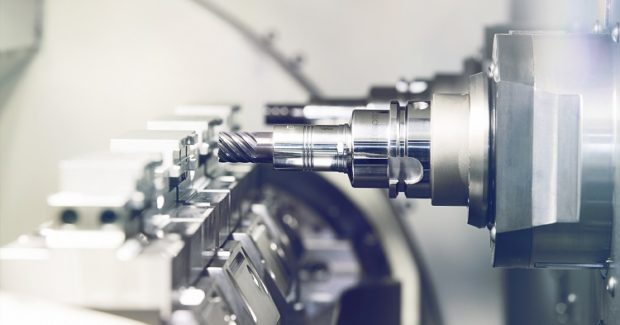Polygonal Clamping Addresses Medical Micromachining Needs
We recently had a question-and-answer session with Matt Panosh of SCHUNK to discuss the current trends and challenges in micromachining components for medical devices, surgical equipment and other related apparatus, and learn more about the technology many shops are using to compete in this environment.
Posted: October 25, 2018
FM: What current trends, demands or challenges are you seeing in micromachining applications of components used in medical devices, surgical equipment and related apparatus?
Panosh: We’re seeing an increase in smaller, micro-style machines with spindle interfaces. Many users recognize the benefits of higher rpm for machining and are transitioning from larger, heavier CAT taper spindles to lighter, faster HSK spindles. They are also more aware of the advantages of using high quality toolholders that can lower cutting tool costs, improve part accuracy by holding tighter tolerances, and improve surface finish. In the past they would conduct tests with various cutting tools to improve their machining process, but now many of them realize that simply switching to a high quality toolholder can have a larger impact on their overall process cost and part quality, all while reducing the time and expense invested in testing.
This shift to higher speed, higher precision micromachining has created the need for slim, light and accurate toolholders that are capable of reaching into small, low-clearance cavities for precise cutting. There is very little mass in a small taper toolholder, which means balance becomes extremely important. Even the smallest amount of bend off-center can throw the balance off-center in a small holder running at 40,000 rpm, causing vibration in the system that can damage the machine spindle.
FM: How can machinists meet this challenge?
Panosh: TRIBOS polygonal clamping technology is one proven answer. It is a polygonal toolholding system that works within the elastic range of the material. With TRIBOS, the clamping bore of the toolholder is deformed into a polygon-shaped bore, placed in a hydraulic press that puts pressure on the three lob points, then formed into a round bore that allows the user to insert the cutting tool shaft. This results in a robust toolholder with a slim OD wall that maintains a very accurate and repeatable clamping bore. TRIBOS symmetrically-designed toolholders are light, accurate, have very little imbalance and are available in small HSK-E 20 to HSK-E 40 tapers that are ideal for and commonly seen in micro-machines. TRIBOS is fine-balanced by default and is suitable for high speeds with a balancing grade of G2.5 at 25,000 rpm. This technology addresses these micromachining needs:
- Accuracy/repeatability. TRIBOS holders have 0.003 mm run-out accuracy at Ø2.5 that is repeatable through thousands of cycles to ensure good tool life, machining accuracy and good surface finish. Any operator can clamp and unclamp the tool and it will repeat with the same accuracy every time.
- Rotationally symmetric design (balance). A TRIBOS holder has little to no inherent imbalance throughout its manufacturing process: No collets, nuts or mechanical accessories are required to clamp the tool. No heat is used in the process, so there is no possibility of micro-bend due to a heat-up and cool-down cycle. Standard holders are balanced to G2.5 at 25,000 rpm. Special balancing at higher rpm is possible and the system has been rated for speeds up to 85,000 rpm.
- No moving parts: A sleeve can be used to clamp other diameters within the main bore of the holder, but we always recommend direct clamping tools for best accuracy. TRIBOS symmetric one-piece design is always best when direct clamping tools.
- Small tool clamping: The clamping bore of the TRIBOS-MINI and TRIBOS-RM are formed through EDM process to create extremely small clamping bores that are under 1 mm and down to 0.3 mm.
https://youtu.be/o3-dpP1f9m0
FM: Are there ideal machining applications for this technology?
Panosh: This clamping technology is most fitting in the machining world as an accessory with the TRIBOS-SVL extension that is commonly used in TENDO hydraulic holders which allow users to easily build highly accurate assemblies for reach and tight machining quarters. It is perfect for micromachining work requiring HSK-E 20 through HSK-E 40 tapers designed for high speed spindles.
FM: Any additional insights you’d like to share?
Panosh: In machining applications, another important competitive advantage with TRIBOS is its simplicity and ease of use. It does not require a periphery device to clamp and unclamp the tool. Compared to other small toolholder technologies, it allows the user to quickly clamp and unclamp tools in the pump, unlike heat shrink systems that have lengthy tool setup times due to the heat-up and cool-down cycle necessary to clamp the cutting tool. Clamping cycles are one of the main reasons that heat-shrink users switch to TRIBOS. It works within the elastic range of the material and thousands of cycles are possible if holders are well cared for. Heat shrinking with bores smaller than 3/8 in tend not to last as long through the heat-up and cool-down cycle. Also, the price of the system is attractive. Unlike heat shrink systems that start at $7,000 and up, a TRIBOS clamping device starts under $3,000. There are also small low-cost, benchtop clamping devices that can be kept at the machine tool for the TRIBOS-RM and Mini models.
Matt Panosh is the group manager of tooling at SCHUNK, Inc., 211 Kitty Hawk Drive, Morrisville, NC 27560, [email protected], www.tendo-series.com, www.schunk.com.















